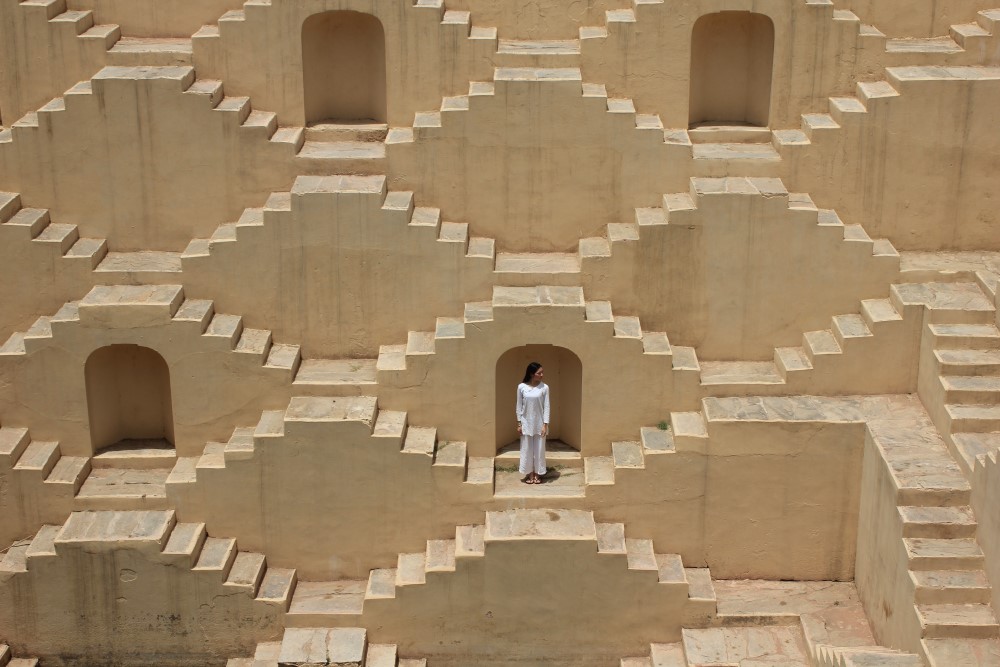I know what you’re thinking – stairs, really?
Stairs are fundamental to a building’s design, and the useability of the space for the rest of a building’s lifetime – so its important to get them right.
Part 9 vs Part 3
Seems obvious enough; if your building is under Part 9 – you go to Section 9.8. If your building is under Part 3 – you go to Section 3.4.; more specifically, Subsections 3.4.3. and 3.4.6. Most of the time, these requirements will apply to all stairs in your building. There are some exceptions, however, including:
- Stairs entirely within a dwelling unit are allowed to be designed to Section 9.8, even when the units are within a Part 3 building. [3.3.4.7.]. Think of an apartment building that contains 2 storey units, or top floor units that have access to a private roof top patio space. Any common stairs, including shared exits and shared exterior stairs, will have to be designed to Section 3.4.
- Fire escapes [3.4.7.]. Major caveat here – fire escapes are extremely limited to where they can be used and will not be permitted in new buildings. The use and design of fire escapes is worthy of its own blog post! (hint, hint to anyone reading this and wants to write one!).
- Stairs that serve only service spaces or within industrial occupancies meant only for occasional use to access and service machinery. They cannot be used as part of an exit or an access to exit, but are not required to meet the Building Code requirements of either Section 3.4. or 9.8., however – there may be other standards or regulations, like Occupational Health and Safety – that could apply.
What’s the Difference?
Part 9 contains two sets of requirements:
- those for private stairs (contained within or serving only a single dwelling unit), and
- public stairs (all other stairs).
It is important to note that these requirements had significant updates in the 2015 National Building Code (and subsequent versions of other codes – i.e., the 2018 British Columbia Building Code).
Within Part 3, there are requirements for care occupancies (Group B, Division 2 and 3) that are in addition to the requirements noted below.
| Requirement | Part 9 – Private (Within a Dwelling Unit) | Part 9 – Public | Part 3 |
| Stair Width | Minimum 860mm [9.8.2.1.(2)] *Adaptable dwelling unit requirements in the Vancouver Building Bylaw require all dwellings to have at least one stair with a minimum width of 915mm [3.8.5.] | Minimum 900mm [9.8.2.1.(1)] | Minimum 900mm if not serving more than 2 storeys above or 1 storey below lowest exit level Minimum 1100mm all other stairs [T 3.4.3.2.-A] |
| Headroom | Minimum 1950mm [9.8.2.2.(3)] *NBC allows for further reduction to 1850mm in secondary suites under beams or ducts [9.8.2.2.(4)] | Minimum 2050mm [9.8.2.2.(2)] | Minimum 2050mm [3.4.3.4.(1)] |
| Rise | Minimum 125mm Maximum 200mm [T 9.8.4.1.] | Minimum 125mm Maximum 180mm [T 9.8.4.1.] | Minimum 125mm Maximum 180mm [3.4.6.8.(2)] *open risers not permitted [3.4.6.8.(3)] |
| Run | Minimum 255mm Maximum 355mm [T 9.8.4.2.] | Minimum 280mm Maximum – no limit [T 9.8.4.2.] *Studies have shown that runs that are too large can cause tripping hazards – even if they are permitted by Building Code | Minimum 280mm Maximum – no limit [3.4.6.8.(1)] *Studies have shown that runs that are too large can cause tripping hazards – even if they are permitted by Building Code |
| Min # Risers | No minimum | 3 [9.8.3.2.] *Not applicable to exterior stairs | 3 [3.4.6.2.(1)] *Exemption for interior flights in restaurants [3.3.2.15.(1)] *Not applicable to exterior stairs |
| Handrails Required | 1 – regardless of stair width or configuration within a dwelling unit [T 9.8.7.1.] *No handrail required in a dwelling unit where not more than 2 interior risers or not more than 3 exterior risers. On a curved flight of stairs one handrail must be on the narrow end of the treads. | Straight run stairs: 1 where less than 1100mm width, 2 where greater or equal to 1100mm or Curved stairs: 2 regardless of width [T 9.8.7.1.] + Intermediate handrails where required [9.8.7.1.(2)] | 1 where straight run is less than or equal to 1100mm width [3.4.6.5.(1)] 2 where greater than 1100mm width or when curved [3.4.6.5.(2)] + Intermediate handrails where required [3.4.6.5.(3)] |
| Guard Height | 900mm inside dwelling units and for exterior guards not more than 1800mm above ground [9.8.8.3.] | 1070mm [9.8.8.3.(1)] *9.8.8.3.(4) may allow for reduction to 900 in some instances, but not for exit stairs | 1070mm [3.4.6.6.(2)] |


2 Responses
Great summaries for the stairs, convenient that you have a table comparison between the Part 3 and Part 9 buildings! One thing I realized recently about the handrails difference between Part 3 and Part 9 is that there are certain dimensions for the cross-section diameter or perimeter for the handrails in Part 3 buildings, but not specified in Part 9 buildings. I found lots of builders using the 2×4 for the handrails in the single dwelling units which may be graspable for adults but won’t be for children.
Great post Delaine!